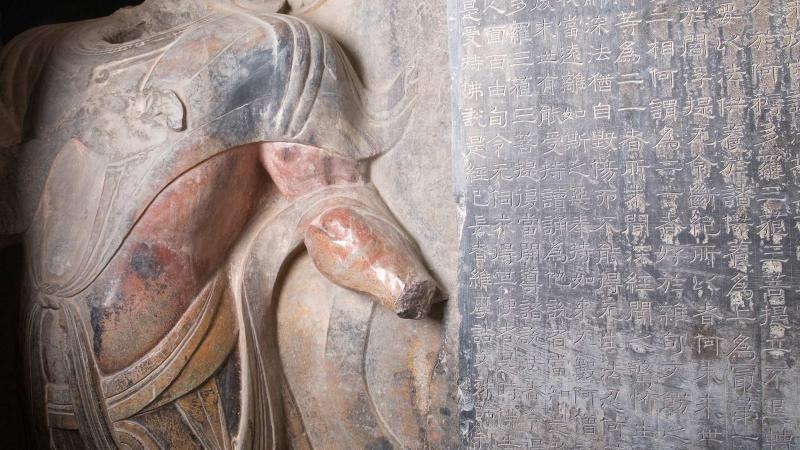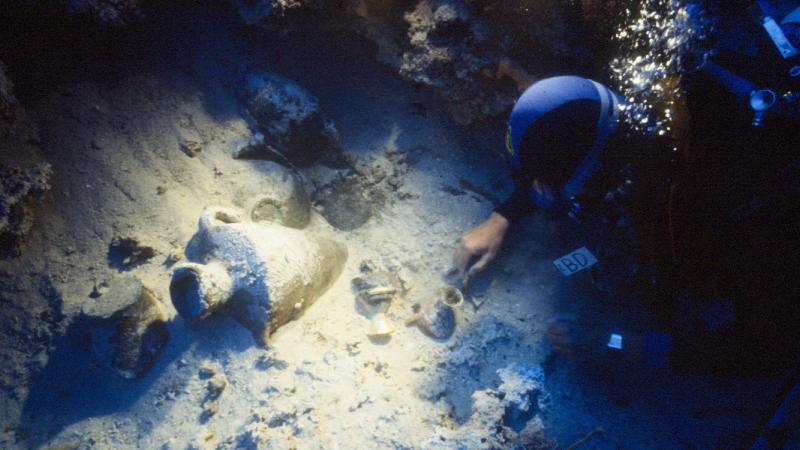Viktor Sarianidi, a Russian archaeologist, was excavating nomadic burials at Tillya Tepe in northern Afghanistan— known as "Hill of Gold”—in the late 1970s, when he discovered tens of thousands 2000-year-old gold artifacts. Those treasures, unearthed on the eve of the 1979 Soviet invasion, became part of the collections of the National Museum in Kabul, which, over the next three decades of civil war, was bombed and looted, its 100,000-plus artifacts unaccounted for: either moved, misplaced, stolen, or destroyed.
In 2003, though, a bright spot emerged.
Fredrik Hiebert, a National Geographic Fellow, called Sarianidi after hearing a new rumor about the gold artifacts. President Hamid Karzai had opened the Central Bank vault and found boxes that had been hidden there since 1981, kept under the protection of tahilwidars, the traditional Afghan key holders. They had contained the gold artifacts from Tillya Tepe, as well as objects in glass, stone, ivory, and precious stones and metals from Fullol, Begrum, Aï Khanum, and other ancient sites. Many archaeologists had long feared that these items, particularly the gold, had been discovered and melted down.
Hiebert and Sarianidi joined a team from the museum and Afghan officials and were overjoyed to uncover many of the long-missing objects. These included the collapsible gold crown worn by a nomad princess buried at Tillya Tepe, coins minted by the Greco-Bactrian successors of Alexander the Great at Aï Khanum, and enameled glass, from Egypt, bearing the image of the goddess Isis, found at Begrum. Many artifacts combined Greek allegorical traditions with Indian, Near Eastern, and even Chinese styles and motifs—for example, “dolphins” closely resembling river catfish made by goldsmiths over a thousand miles from the ocean and a female figure in a classical Aphrodite pose with Parthian wings and features conforming to an Indian ideal of beauty.
All of these pieces had to be cataloged. From 2004 through 2006, the National Endowment for the Humanities provided $90,000, which created a mobile inventory laboratory, allowing Hiebert, Sarianidi, and the team from the National Museum to properly document and preserve these treasures. This mobile inventory lab has been a critical development in the preservation of artifacts internationally, used particularly with Egyptian finds and in customs facilities fighting the illegal antiquities trade. “Being able to inventory artifacts in their home locations, be it in a local museum, warehouse or storage facility, is the best insurance for keeping these cultural treasures from being stolen and sold on the market,” explains Hiebert.
Once the inventory was completed, the National Geographic Society and the National Gallery of Art, with $1 million from NEH, organized the first exhibition of the artifacts outside of Afghanistan, opening in 2008. Over 200 objects, dating from 2200 BCE to 200 CE, were brought to four museums in the United States, as well as stops in Canada, several European countries, and Australia.
Written by Rachel Poor, a writer in Washington, D.C.


